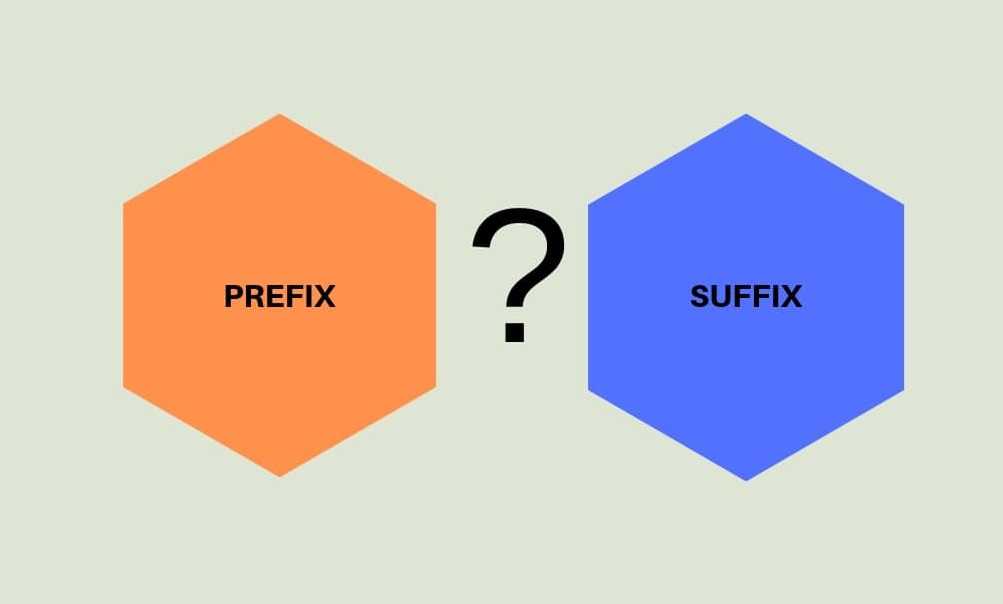Prefix and Suffix in English Grammar with Examples [PDF]
This article will give a better understanding of what prefixes and suffixes are in English Grammar, as well as some useful tips on how to use them effectively. To download the lesson in PDF format, please find the downloadable link attached below in the article.

If you come across the terms Prefixes and Suffixes, the first thing you probably think they an advanced grammatical technique that no one needs.
However, you more than likely use prefixes and suffixes on a daily basis in everyday conversation and have seen them in books and newspapers.
By understanding prefixes and suffixes, you will be able to expand your vocabulary and better communicate with others.
What is the Root Word?
In order for you to understand prefixes and suffixes are, you first need to understand what a root word is? In simple terms, a root word is a word that forms the basis of prefixes and suffixes. They are basic words that prefixes and suffixes help to change the meanings of.
For example, the root word comfort is transformed by the suffix ‘-able’ to create the word ‘comfortable’.
What is Prefix?
Prefixes are a team of words which are placed before a root word and help to create new words. You cannot use prefixes as stand-alone words and must always be connected to a root word. For the most part, a hyphen isn’t needed when using prefixes but sometimes will need a hyphen if the root word you’re connecting the prefix to is a proper noun.
For example: mid-America.
Below are some common prefixes you have most likely come across or used in your everyday vocabulary before:
- im– which can be connected at the start of a root word to make ‘impotent’ or ‘impossible’.
- re– which can be connected at the start of a root word make ‘regain’ or ‘restart’.
- un– which can be connected at the start of a root word to make ‘ungrateful’ or ‘unequal’.
- in– which can be connected at the start of a root word to make ‘inactive’ or ‘invisible’.
- mis– which can be connected at the start of a root word to make ‘misplaced’ or ‘misguided’.
- ex– which can be connected at the start of a root word to make ‘exhaled’ or ‘explode’.
- dis – which can be connected at the start of a root word to make ‘dispose’ or ‘disagree’.
What is a Suffix?
A suffix is a team of words which are placed after a root word, and like prefixes can create new words. By using a suffix you can also change the meaning of the root word, and also show whether a word is a noun, proper noun, or even a verb. Like prefixes, there are also suffixes which can contain hyphens and tend to only be used when the root words are nouns.
- For example: shell-like.
Below are some common suffixes you have most likely come across or used in your everyday vocabulary before:
- –ing which can be connected at the end of a root word to make ‘seeing’ or ‘hearing’.
- –able which can be connected at the end of a root word to make ‘unable’ or ‘uncomfortable’.
- –less which can be connected at the end of a root word to make ‘tearless’ or ‘friendless’.
- –ness which can be connected at the end of a root word to make ‘sadness’ or ‘kindness’.
- –y which can be connected at the end of a root word to make ‘victory’ or ‘furry’.
- –ful which can be connected at the end of a root word to make ‘tasteful’ or ‘grateful’.
- –ly which can be connected at the end of a root word to make ‘sadly’ or ‘gladly’.
What is the Difference between Prefixes and Suffixes?
- The main difference between prefixes and suffixes is that prefixes are used at the start of a root word while suffixes are used at the end of a root word.
- Another difference is that there is the only type of prefix in English grammar, while there are two types of suffixes which are called inflectional and derivational. An inflectional suffix helps change the plural of a root word, whilst a derivational suffix creates a completely new word from the root word. However, all in all, prefixes and suffixes are both quite similar and easy to use once understood.
A Must Watch Video Lesson on Prefix and Suffix:
I hope you able to understand the concept of Prefix and Suffix if you have doubts feel free to comment down below.
References [External Links]:
- Prefixes, Suffixes and Roots- bucks.edu
- Examples of Root Words